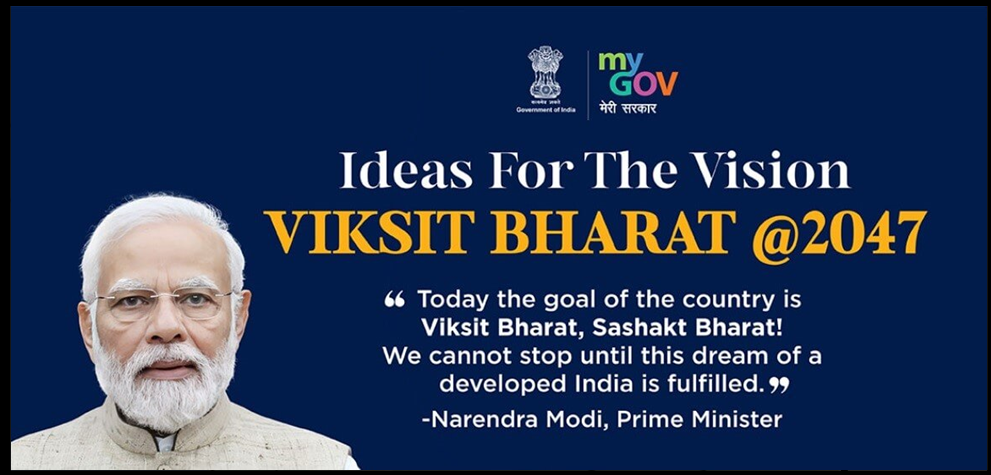INCKUSIVE GROWTH IN INDIA KEY TO VIKSIT BHARAT
Syllabus:
GS 2:
- Indian Economy and issues relating to planning, mobilization, of resources, growth, development and employment.
Focus:
- India has highest GDP growth in all of G20 countries.
Source:- TOI
Overview of India’s Economic Resilience and Growth
India is witnessing a significant period of economic resilience and growth, underpinned by several key factors:
- Political and Economic Stability: The democratic political system, stable governance, liberalized economy, and demographic advantages are pivotal.
- Infrastructure and Financial Sector: Enhancements in infrastructure and a robust financial sector with effective regulators are contributing to the growth.
- Global Confidence: Despite credit rating agencies’ hesitance to upgrade India’s sovereign rating, there’s an upward revision in growth forecasts by Moody’s and Fitch.
Economic Growth and Global Standing
- Growth Trajectory: India is on the path to become the third-largest economy within 48-54 months, targeting a $10 trillion economy by 2035.
- Credit Rating and Economic Indicators: Despite being rated BBB-, India showcases strong economic indicators such as a minor current account deficit, a credible fiscal roadmap, and the 5th largest GDP.
- Real GDP Growth: India has experienced over 8% real GDP growth in the first three quarters of FY2024, the highest among G20 nations.
Discrepancy between GDP and Human Development
- GDP vs. GVA: The difference between GDP and Gross Value Added (GVA) highlights a discrepancy due to indirect tax collections and reduced subsidy spending.
- Sectoral Growth: Agriculture, industry, and services show varied growth rates, with a notable slowdown in agriculture, raising concerns over overall economic momentum.
Addressing Growth and Development
- Capital and Credit Flow: For sustained growth, adequate capital availability and smooth credit flow are essential, especially with a focus on increasing private capital expenditure (capex).
- Financial Ecosystem and Policy Interventions: Diversification of the financial ecosystem and policy reforms are necessary to utilize the Non-Banking Financial Companies (NBFCs) sector more effectively.
Towards Inclusive Growth
- Development Goals: Economic growth must be paired with advancements in health, nutrition, education, and other Sustainable Development Goals (SDGs) to ensure inclusive development.
- Aspirational Districts Initiative: Investments in the Aspirational Districts are crucial to translating high economic growth into meaningful human development.
India’s “Vision Viksit Bharat @2047″ aims to transform the nation into a developed country by the year 2047, marking the 100th anniversary of its independence. This vision encompasses a broad range of goals and initiatives focusing on sustainable development, inclusive growth, and technological advancement. Key points of India’s vision include:
|
Why Inclusive Growth Matters for India’s Future Development:
- Accessibility to Core Public Services:
-
- Severe lack of accessibility to essential public services.
- Public spending on core services remains low (1 – 2% of GDP).
- Uneven quality of institutions exacerbates the issue.
- Malnutrition and Undernourishment:
- Prevalent among marginalized sections, particularly adolescent girls.
- Economic and Social Inequalities:
- Intra-state and inter-state disparities persist.
- Lagging states face poor growth rates and public services.
- Sectoral and Regional Disparities:
- Challenges include low agriculture growth, poor quality employment, rural-urban divides, and gender inequalities.
- Uneven growth across sectors and regions, with neglected policies in agriculture.
- Aim of Inclusive Growth:
- Reducing poverty, inequality, and fostering economic growth.
- Labor Market Dynamics:
- Labor laws often favor informal employment, leading to ‘casualization’ of labor.
- Skilled labor demanded due to trade competitiveness and technological advancements.
- Unsustainable Growth:
- Risks associated with unsustainable economic growth.
Essential Elements of Inclusive Growth in India:
- Skill Development:
-
- Addressing the dual challenge of a lack of highly trained workforce and non-employment of conventionally trained youths.
- Emphasis on vocational training and skill development.
- Financial Inclusion:
- Ensuring access to financial services for vulnerable groups.
- Cultivating a culture of saving to stimulate economic development.
- Technological Advancement:
- Leveraging initiatives like the Digital India Mission for inclusive growth.
- Technology can either decrease or increase inequality depending on its application.
- Economic Growth:
- Targeting a $5 trillion economy by 2024-25 to reduce inequality and boost social expenditure.
- Addressing cyclic and structural challenges for sustainable growth.
- Social Development:
- Empowering marginalized sections through improved social institutions.
- Investments in healthcare, education, and social structures to create a healthy and capable workforce.
| Measurement of Inclusive Growth
Inclusive Development Index (IDI)
Social Progress Index (SPI)
Global Slavery Index
|
| Initiatives for Inclusive Growth: Schemes Driving India’s Progress
Financial Inclusion:
Employment and Inclusive Growth:
Agriculture and Inclusive Growth:
Technology and Inclusive Growth:
Skill Development and Inclusive Growth:
|
Source:
The New Indian Express
Mains Practice Question:
“Discuss the strategic initiatives and challenges associated with India’s Vision Viksit Bharat @2047. Evaluate the role of governance, technology, and socio-economic policies in achieving this vision. How can India balance its economic ambitions with environmental sustainability and social inclusion to ensure a holistic development by 2047?”




